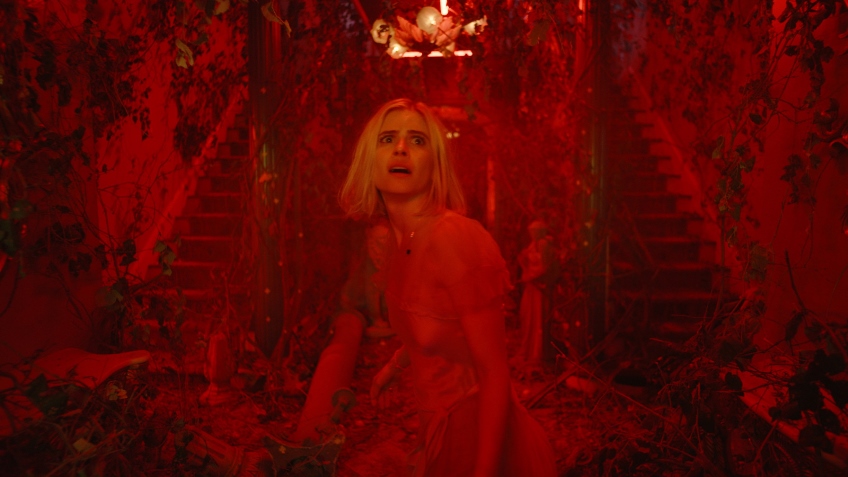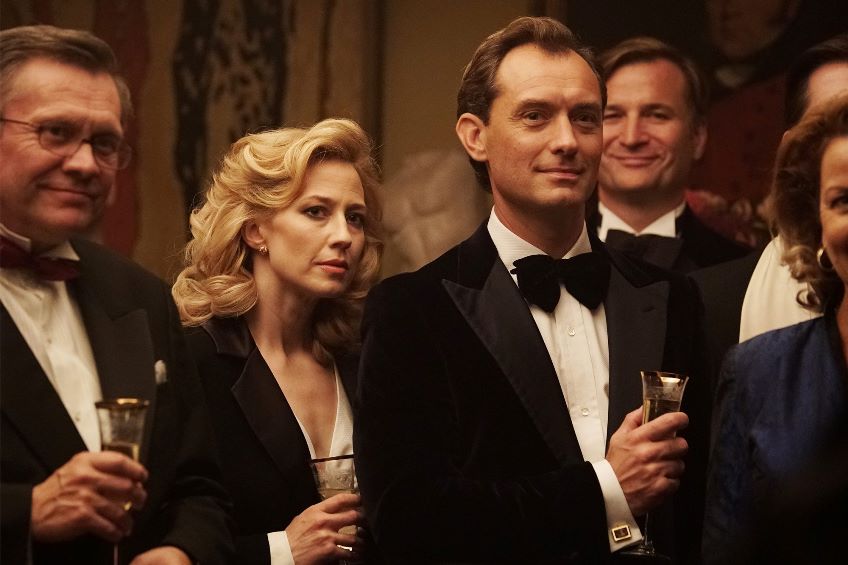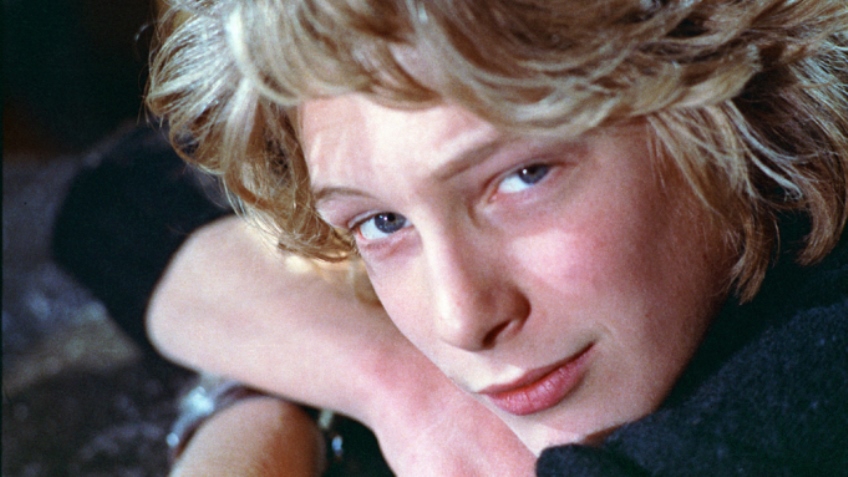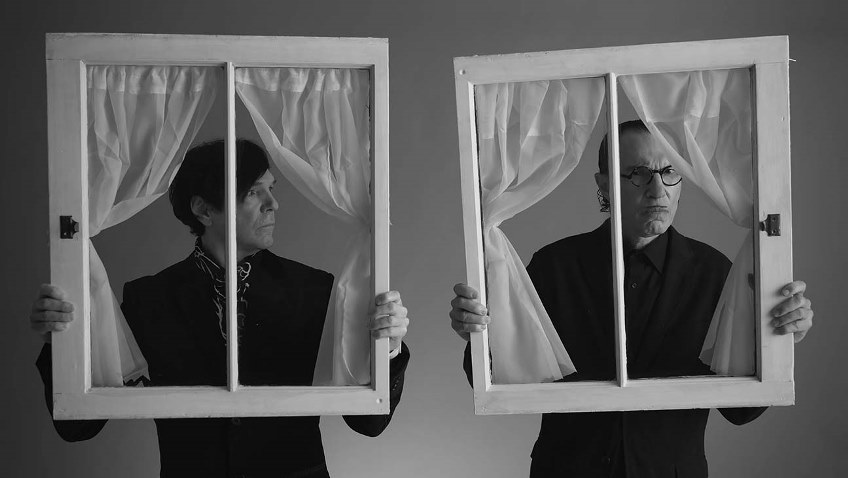The Sundance Festival, is, as usual, a mixed bag, but part of the fun of festival going is the element of surprise, taking the good with the not so good, and discovering a few gems. And Sundance is independent cinema so there’s no chance of encountering a big budget blockbuster or sequel. In addition to feature films, there is an intriguing selection of shorts.
The first thing you notice is the overwhelming number of female and ethnic directors. In the ethnic women (if it is still acceptable to use the word) category, director-co-writer Janicza Bravo stands out for taking audiences on a thrill ride in Zola, arguably the first film adapted from a Twitter Tweet.
You can look at the films on offer in this year’s Sundance Festival London (the full festival took place in Utah last January) in pairs of roughly similar genres and subject matters, starting with noteworthy documentaries about current affairs.
In the Same Breath (95 mins), Chinese American filmmaker Nanfu Wang’s sobering exploration of the origin and spread of Coronavirus, could be paired with Writing with Fire (92 mins), the story of Khabar Lahariya, India’s only newspaper run by Dalit women. Getting the truth out from under traditional state channels of information, run by men with self-serving interests is a common theme.

The festival offers two fantasy horror films, both featuring self-destructive young women who have had recurrent dreams and fantasies ever since their respective sisters died in disturbing circumstances. Carlson Young set herself the challenge of writing, directing and starring in The Blazing World (101 mins.) the title being a reference to the alternate dimension that is luring the woman away from reality to a realm in which the sister she misses may still be alive.
The Blazing World would be a good double bill with Censor (Cert. 15, 84 mins), directed and co-written (with Anthony Fletcher) by another female director, Prano Bailey-Bond. Niamh Algar is perfect as Enid, a tight lipped, conscientious British censor working through an incessant number of “video nasties” – slasher porn – in the 1980s. Enid is an attractive young woman, and while she is slightly aloof, she is happy to stay late to write a report for a colleague with a better work-life balance.
If Enid takes her job a bit too seriously, never ceasing to remind people that she has a responsibility to protect the public, there’s a deep-rooted reason. She is literally haunted by the disappearance of her younger sister Nina, whose body was never found. Enid carries with her into adulthood the guilt of her sister’s death. And she is convinced that her parents, who, longing for closure, want to sign the death certificate in this still-open case, hold her responsible.
Her waking fantasies are triggered when a real-life murder claimed to have been inspired by the brutality of Frederick North’s 1974 film Deranged, was passed by the censor, and somehow the press have tracked that fatal error to Enid.
If the script hits us over the head with the psychological conceit, it is particularly entertaining with the 1980’s sexist office banter, and the convincing work-related dialogue amongst Enid and her colleagues.
But the high point comes not in a fantasy sequence, but when Enid becomes fixated on the director Frederick North and on his star, Alice Lee (Sophia La Porta) who has recently disappeared – like Nina. In this part of the film Enid ends up at the home of North’s sexist, predatory producer, Doug Smart (Michael Smiley) and it would be a spoiler to say more about this suspenseful visit.
The film loses its way in the drawn out ending when it turns into a video-nasty itself. The terrific 1980’s production and set design by Paulina Rzeszowska and Bronyn Franklin respectively, Annika Summerson’s versatile cinematography and the sound effects enhance the creepy atmosphere and help us navigate Enid’s mind.

The Nest forms a pair with Human Factors, two films that explore marital breakdowns within the psychological thriller genre.
The Nest (Cert TBC, 117 mins) stars Jude Law as 1980s’ former wunderkind stockbroker Rory O’Hara, who left his City firm to follow the American dream in Los Angeles. Here we find the charming, ambitious, middle-aged risk-taker is happily married to his lovely equestrian wife, Allison (Carrie Coon), is father to sensitive, adorable Benjamin (Charlie Shotwell) and stepfather to the confident, sensible, if typical teenager Samantha ‘Sam’ (Oona Roche).
Tensions rise when Rory announces the family is moving to London where his former boss, Arthur Davis (Michael Culkin, excellent) has offered him a job he cannot refuse infusing his new, American ideas into Davis’s tired, stale company. Allison protests the move, not just because Rory is not thinking about her riding school and the kids’ schooling, but because, as we learn it’s their fourth move in their ten years of marriage.
The new home in Surrey, England is a showy stately home, way too big for the family, and sends us signals that Rory is a fantasist, living beyond his means. Predictably, things go downhill rapidly when Allison’s beloved horse suddenly dies and the failure of one of Rory’s ill thought-out business venture’s leave the family so broke that Allison takes a job with a local farm.
As with Durkin’s chilling study of a disturbed mind, Martha Marcy May Marlene, The Nest suffers from a remote, and unlikeable central character, particularly when Durkin seems undecided about who the central character is. Is it really Rory or is it his long-suffering wife whose journey from trust to annoyance and doubt, to suspicion, and then anger to independence seems to dominate the film. Equally problematic, are the supernatural scenes that appear as after-thoughts as though from an earlier draft of the script.
A more interesting, and cinematic take on a collapsing upper middle-class marriage is writer-director Ronny Trocker’s Human Factors (Cert TBC, 99 mins) another film in which a seemingly happy, productive husband and wife, Jan (Mark Waschke) and Nina (Sabine Timoteo) live with their son and daughter in a modern house in Germany, and in their inherited weekend cottage on the sea in Belgium.
The first sign that all is not well is a mysterious home invasion in the weekend house when Jan is briefly off buying supplies shortly after arriving for a holiday break. Max (Wanja Valentin Kube) is upstairs in his bedroom while his older sister Emma (Jule Hermann) has gone off with her friends.
When a local policeman arrives, Nina, slightly wounded, can only report that she heard noises, heavy footsteps, and a door slamming, but odd, nothing is missing except Max’s adored pet rat, Zorro. Jan and Nina own an ad agency that, against Nina’s wishes, is representing a political party in an upcoming election. The policeman rejects the suspicion that someone in Belgium devised the break in to try to scare them away from this German campaign.
From this point on, the mysterious home invasion is played out from various angles and points of view, including Zorro’s, each time fleshing out the incident and the characters. Gradually more characters, including Nina’s gay brother and his boyfriend, and details emerge to complicate and shed light on the break-in and the marriage if not on why this couple live on top of a noisy, high speed train line that symbolically runs past their house shaking the foundations.
Though Trocker’s film feels innovative, you cannot but note the obvious influence of Ruben Östlund’s 2014 film Force Majeure when Max, who has looked out the window during the break-in, tells his mother that Jan was there all along, hiding in the garden rather than protecting his family.
A pair of absorbing, riveting, if frustratingly flawed, documentaries, Misha and the Wolves and The Most Beautiful Boy in the World are, on the surface, about ordinary people who had their moment in the spotlight before the lights went out.
Sam Hobkinson’s Misha and The Wolves (Cert TBC, 90 mins) is one of those multi-layered documentaries like Three Identical Strangers or Tickle, that draw the audience in as the layers are shed to reveal ever darker undercurrents taking us on an unpredictable, unsettling journey.
Misha Defonseca, a Belgium immigrant, certainly in her late 70s, and established resident of Millis, Massachusetts who, one day goes into Temple Beth Torah and tells the congregation that she is a Holocaust survivor. “You could hear a pin drop” one of a series of articulate witnesses in the film recalls. When her parents were arrested, the 7-year-old was placed with a wealthy Catholic family in Belgium. A kindly grandfather showed her maps of Germany, where her parents were allegedly taken, but otherwise she hated the family and escaped through the woods to find her parents. She survived, like other Jews, sleeping in the woods and raiding homes for food. Little Misha, however, had extra protection. She was taken in by a pack of wolves.
Generous donations from the temple, a film at a nearby wolf reserve, a book deal, international publishing royalties, a French film and the promotional opportunity to appear on Oprah – which Misha suddenly, and inexplicably pulls out of – follow. If you don’t know the story, which is not new, it’s best to go into the film that way.
For Hobkinson constructs the film for people who do not know about it, with an aim of creating suspense and revealing all those layers in their turn. But in the process, he spends far too long on Misha’s story (we repeatedly see animation of a little girl in the woods with wolves) and on the meticulous attempts by ruined, local book publisher-turned-detective Jane Daniels to vindicate herself. There is not enough time spent focusing on the story within the story, in a wider context.
The question of why everyone is so willing to believe an unbelievable story is closely tied into the enormous collective sympathy for victims of what the darkest period in human history, as well as the variety of harrowing stories of the period that are true.
But fabrications are dangerous as they play into the hands of Holocaust deniers, an issue not explored in the film. And Hobkinson himself muddies the water when he puts Misha on the screen for interviews, only in the credits informing us that Misha played no part in the making of the film and is portrayed by an actress.

Equally absorbing – though with diminishing returns – is Kristina Linstrom and Kristian Petri’s Swedish documentary, The Most Beautiful Boy in the World (Cert 15, 90 mins), a documentary of particular interest to cinema fans and child therapists.
The first thirty minutes of this film delivers an increasingly unsettling fascination catching up with Björn Andrésen, the fifteen-year-old plucked from obscurity to co-star with Dirk Bogarde in Luchino Visconti’s 1971 adaptation of Thomas Mann’s novel, Death in Venice. If you ever wanted to know what happened to the Swedish schoolboy who Visconti paraded through the Cannes Film Festival – and a gay nightclub – after dubbing him, “the most beautiful boy in the world”, this film is for you.
The film is jaw-droppingly riveting in the segments covering the audition, Björn’s pushy grandmother, the production and immediate aftermath of Death in Venice, with its archival footage, but the directors lose the narrative thread in attempting to connect past and future tragedies with this life changing event.
Though tragic enough, with a stronger narrative, this could have been a penetrating study of the dangers of child stardom, one that is even more topical with the recent Britney Spears court case. Björn seems equally unenthusiastic in this film as he was about doing Death in Venice, and his responses are often led by those around him. Although the film raises many questions that remain unanswered, it remains hauntingly compelling.
It is tempting to pair Janicza Bravo’s Zola (Cert 18, 90 mins) with the ironically titled Pleasure, Ninja Thyberg’s worker’s-eye view of the pornography industry that is not easy to watch. Both films boast a notable degree of exposed flesh, breasts, male genitalia, and female sexual exploitation. But a better pairing might be Manuel Crosby and Darren Knapp’s First Date, in which a long-awaited date with the girl next door turns into a chaotic roller-coaster thrill ride with crazy characters and homicidal criminals.
The comparison is apt insofar as Zola (a breakthrough performance from 21-year-old dancer Taylour Paige), a Detroit waitress and pole dancer, never expects that her date with new friend Stefani (Riley Keough, marvellous), would turn into a frightening, sleepless and sordid 48-hour road trip. Keough is perhaps best known for her scene-stealing performance in Andrea Arnold’s American Honey, another wild, road movie dependent on music, but meatier, and more solid than Zola.
The film’s claim to fame is that it is based on a Tweet sent by Aziah “Zola” King that went viral and resulted in David Kushner’s article “Zola Tells All: The Real Story Behind the Greatest Stripper Saga Ever Tweeted” in Rolling Stone Magazine.
Zola tells her boyfriend that she and Stefani are going pole dancing in Tampa Florida for the weekend with Stefani’s roommate and boyfriend. Zola learns too late that the roommate is Stefani’s pimp, Abegunde X. Olawale, and her boyfriend is the submissive, long-suffering Derrek (Nicolas Braun) who is trying to save Stefani from herself but lacks the brains, machismo and charisma to exert any influence on her.
And what no one tells Zola is that X has vetoed pole dancing and advertised the girls on social media as prostitutes at insultingly low rates. Zola is outraged when she learns that Stefani, who claims she is only doing it for her daughter, puts up no resistance. Zola takes over the business arrangements that night, challenging, but also infuriating X.
To say anything more about this impeccably cast and acted film would spoil the fun, much of which is down to its stylish novelty, its energy and the unpredictable sequence of events in this surreal, weekend. Mica Levi’s terrific music enhances that style to such an extent that you don’t realise that the film is a bit hollow.
In a class by itself, The Sparks Brothers (Cert 15, 140 mins) is the longest, the funniest, and the most nostalgic film of the festival, particularly for anyone over 50. Director, Edgar Wright might be best known for his British zombie comedy Shaun of the Dead, Hot Fuzz (2007) and the science fiction comedy The World’s End (2013), but The Sparks Brothers is pure comedy. Undergoing a septuagenarian comeback with this release and their score of Leos Carax’s Best Director winner at Cannes, Annette, Ron and Russell Mael help Wright look back on their 50-year career and answer the big question. How can a group that has lasted 50 years, made 25 albums and 345 songs be so fondly recalled and yet so unknown? Most people who have heard of Sparks think they are British, (the film explains why), but they were born in L.A. where they still live.




